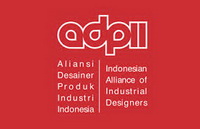Buddy sebagai Digital Psychological Intervention berbasis token ekonomi bagi individu dengan ADHD
Abstract
ADHD is a neurodevelopmental disorder defined by impairing levels of inattention, disorganization, and/or hyperactivity-impulsivity. The prevalence of ADHD is reported to continue increasing every year. In fact, the high need for ADHD children to get treatment is not matched by the availability of a number of psychologists. This makes hard for children with ADHD to access a psychologist due to limited reach and resources. Therefore, we need a tool that can help the therapy process. Buddy is a digital innovation that has a feature such as schedule lists, video role models, and a token shop that can make it easier for psychologists and parents to customize it. Psychologists can freely arrange intervention designs (schedule lists and rewards) according to criteria for ADHD children being handled. This study aims to find out how the prediction of the usefulness of the Buddy application prototype using the token economy approach through prototype visualization can solve the problem of ADHD child Intervention. The method used is research and development (R&D) which produces a UI design-based token economy procedure. This design generates 22 UI mock-up pages that represent the application model
Keywords
Full Text:
PDFReferences
American Psychiatric Association (Ed.). (2013). Diagnostic and statistical manual of mental disorders: DSM-5 (5th ed). Washington, D.C: American Psychiatric Association.
Bélanger, S. A., Andrews, D., Gray, C., & Korczak, D. (2018). ADHD in children and youth: Part 1—Etiology, diagnosis, and comorbidity. Paediatrics & Child Health, 23(7), 447–453. DOI: https://doi.org/10.1093/pch/pxy109
Bul, K. C., Kato, P. M., Van der Oord, S., Danckaerts, M., Vreeke, L. J., Willems, A., … Maras, A. (2016). Behavioral Outcome Effects of Serious Gaming as an Adjunct to Treatment for Children With Attention-Deficit/Hyperactivity Disorder: A Randomized Controlled Trial. Journal of Medical Internet Research, 18(2), e26. DOI: https://doi.org/10.2196/jmir.5173
Coelho, L. F., Barbosa, D. L. F., Rizzutti, S., Muszkat, M., Bueno, O. F. A., & Miranda, M. C. (2015). Use of Cognitive Behavioral Therapy and Token Economy to Alleviate Dysfunctional Behavior in Children with Attention-Deficit Hyperactivity Disorder. Frontiers in Psychiatry, 6, 167–167. PubMed (26635642). DOI: https://doi.org/10.3389/fpsyt.2015.00167
El-Nagger, N. S., Abo-Elmagd, M. H., & Ahmed, H. I. (2017). Effect of applying play therapy on children with attention deficit hyperactivity disorder. Journal of Nursing Education and Practice, 7(5), 104. DOI: https://doi.org/10.5430/jnep.v7n5p104
Hollis, C., Falconer, C. J., Martin, J. L., Whittington, C., Stockton, S., Glazebrook, C., & Davies, E. B. (2017). Annual Research Review: Digital health interventions for children and young people with mental health problems - a systematic and meta-review. Journal of Child Psychology and Psychiatry, 58(4), 474–503. DOI: https://doi.org/10.1111/jcpp.12663
IPK Indonesia. (2020, Mei 3). Jumlah Psikolog Klinis Anggota IPK Indonesia. Retrieved from https://ipkindonesia.or.id/jumlah-psikolog-klinis-anggota-ipk-indonesia/
Johnson, K. R., Fuchs, E., Horvath, K. J., & Scal, P. (2015). Distressed and Looking for Help: Internet Intervention Support for Arthritis Self-Management. Journal of Adolescent Health, 56(6), 666–671. DOI: https://doi.org/10.1016/j.jadohealth.2015.02.019
Kadison, L. S. (2015). Using Gamification to Increase Adherence to Daily Living Routines (Graduate Theses and Dissertations). University of South Florida.
Kementerian Kesehatan RI. (2014). Situasi Penyandang Disabilitas. Buletin Jendela Data dan Informasi Kesehatan. DOI: https://doi.org/10.1007/s13398-014-0173-7.2
Miltenberger, R. G. (2012). Behavior modification: Principles and procedures (5th ed). Australia ; Belmont, CA: Wadsworth Cengage Learning.
Reitman, D., Murphy, M. A., Hupp, S. D. A., & O’Callaghan, P. M. (2004). Behavior Change and Perceptions of Change: Evaluating the Effectiveness of a Token Economy. Child & Family Behavior Therapy, 26(2), 17–36. DOI: https://doi.org/10.1300/J019v26n02_02
Ronimus, M., Kujala, J., Tolvanen, A., & Lyytinen, H. (2014). Children’s engagement during digital game-based learning of reading: The effects of time, rewards, and challenge. Computers & Education, 71, 237–246. DOI: https://doi.org/10.1016/j.compedu.2013.10.008
Ruiz-Manrique, G., Tazima-Pojo, K., & Montañes-Rada, F. (2016). Case Report: “ADHD Trainer”: The mobile application that enhances cognitive skills in ADHD patients. (F1000Research 2015, 3:283). DOI: https://doi.org/10.12688/f1000research.5689.3
Santrock, J. W. (2011). Child development (13th ed). New York, NY: McGraw-Hill Humanities.
Sayal, K., Prasad, V., Daley, D., Ford, T., & Coghill, D. (2018). ADHD in children and young people: Prevalence, care pathways, and service provision. The Lancet Psychiatry, 5(2), 175–186. DOI: https://doi.org/10.1016/S2215-0366(17)30167-0
Soares, D. A., Harrison, J. R., Vannest, K. J., & McClelland, S. S. (2016). Effect Size for Token Economy Use in Contemporary Classroom Settings: A Meta-Analysis of Single-Case Research. School Psychology Review, 45(4), 379–399. DOI: https://doi.org/10.17105/SPR45-4.379-399
Sonne, T., Müller, J., Marshall, P., Obel, C., & Grønbæk, K. (2016). Changing Family Practices with Assistive Technology: MOBERO Improves Morning and Bedtime Routines for Children with ADHD. Proceedings of the 2016 CHI Conference on Human Factors in Computing Systems, 152–164. San Jose California USA: ACM. DOI: https://doi.org/10.1145/2858036.2858157
Sugiyono. (2009). Metode Penelitian Administrasi Dilengkapi Dengan Metode R&D. Bandung: Alfabeta.
Tentama, F. (2009). Peran Orang Tua dan Guru dalam menangani perilaku Hiperaktifitas pada anak ADHD di SLB Negeri 3 Yogyakarta. Jurnal KesMas. 3(1), 51–57. Retrieved from http://eprints.uad.ac.id/id/eprint/2756
Xu, G., Strathearn, L., Liu, B., Yang, B., & Bao, W. (2018). Twenty-Year Trends in Diagnosed Attention-Deficit/Hyperactivity Disorder Among US Children and Adolescents, 1997-2016. JAMA Network Open, 1(4), 1–9. DOI: https://doi.org/10.1001/jamanetworkopen.2018.1471
DOI: https://doi.org/10.24821/productum.v7i1.4907
Refbacks
- There are currently no refbacks.
p-ISSN 2477-7900 | e-ISSN 2579-7328

This work is licensed under a Creative Commons Attribution 4.0 International License.
Like & Follow Us










